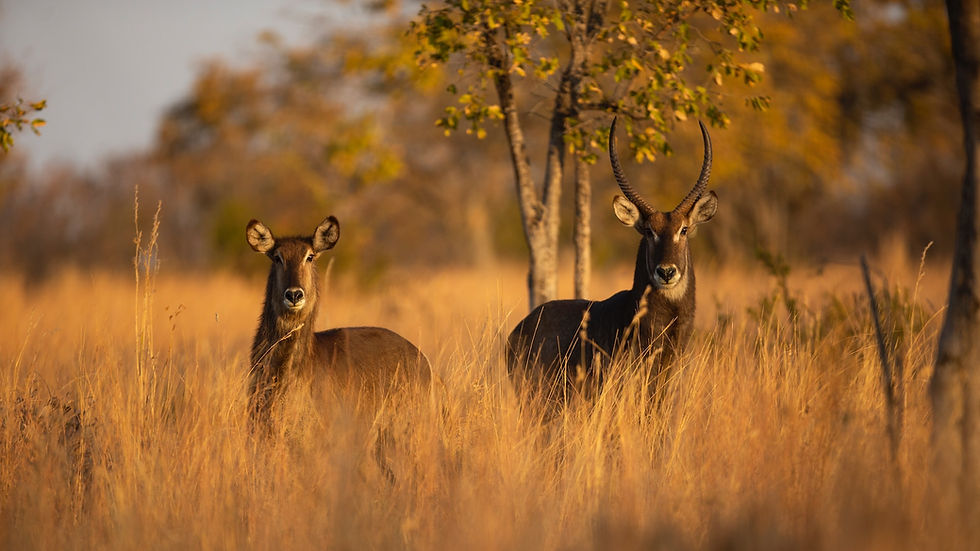- Corey Kirkland, Marta Farré

- Sep 11, 2023
- 2 min read
Corey Kirkland, Marta Farré
Waterbuck (Kobus ellipsiprymnus) are a species of antelope distributed across central and southern Africa. The name waterbuck derives from their greater dependence on water compared to other antelopes. They are currently classified into two different subspecies, the common (K. e. ellipsiprymnus) and the defassa (K. e. defassa), with striking variation in rump colouration and chromosome number between subspecies. The common waterbuck has a white elliptical ring around its rump and a variable karyotype between 2n = 50 and 2n = 52, whilst the defassa has a completely white rump and a karyotype of either 2n = 53 or 2n = 54 (Kingswood et al. 1998). Differences in chromosome numbers are due to the Robertsonian fusion of chromosomes 6 and 18 and/or chromosomes 7 and 11. Whilst the two subspecies share predominantly different ranges across the African continent, genetic (Lorenzen et al. 2006) and genomic (Wang et al. 2022) studies have found both genetic differentiation between the subspecies but also hybridisation in zones where the two subspecies range overlap.

The species is currently listed as Least Concern by the IUCN, with the defassa subspecies listed as Near Threatened. Population numbers have declined across the species range and in some areas have been lost completely. The main threats to the species include habitat loss and hunting, with the majority of the species now residing in protected areas.
Today we share the chromosome-length genome assembly of the defassa waterbuck, created using a combination of PacBio HiFi and Hi-C sequencing. PacBio HiFi sequencing was carried out at Edinburgh Genomics (UK) using DNA extracted from a captive-born female waterbuck fibroblast cell line established by Marta Farré’s research group at the University of Kent (UK). The animal was born at Howletts Wild Animal Park (Aspinall Foundation, UK) and the sample was kindly donated by Tony King (Conservation and Reintroduction Coordinator). PacBio HiFi reads were assembled using HiFiasm at the University of Kent.
The followup Hi-C scaffolding was done by DNA Zoo using data from a female common waterbuck sample obtained from SeaWorld (2n=52). Hi-C data from the original defassa waterbuck was used to help resolve, together with cell line karyotyping results, the assembly karyotype to match the defassa subspecies (2n=54). Another waterbuck from SeaWorld (2n=51) was included in the analyses to help explore the polymorphic waterbuck chromosomes.
Check out the interactive contact maps highlighting the plastic waterbuck karyotype below, and visit the assembly page for more details on the samples and the assembly!





